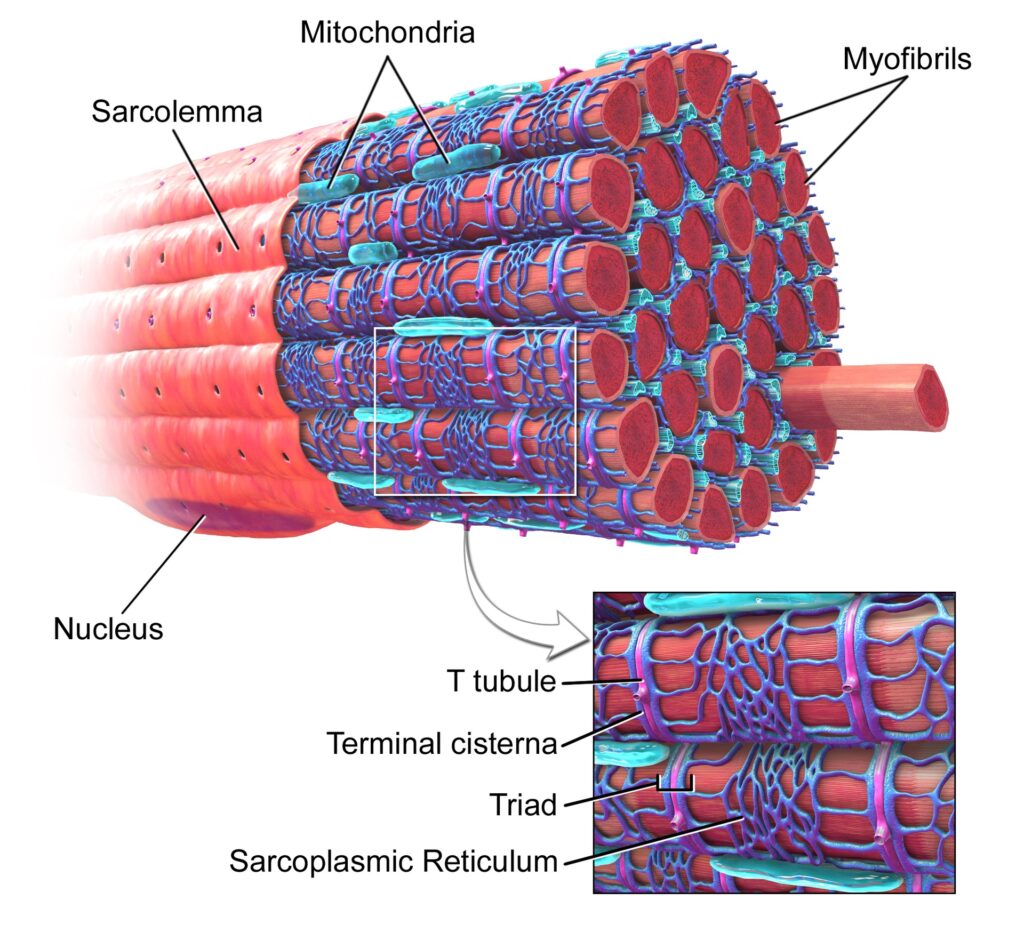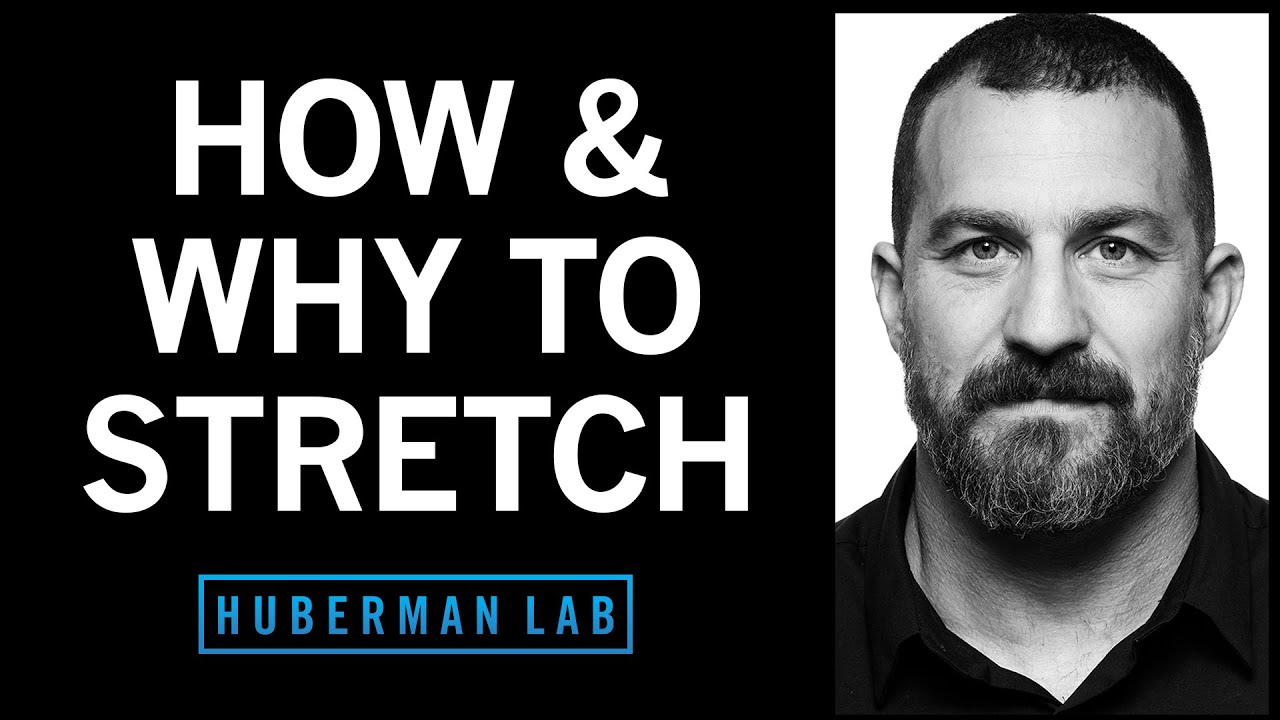- Reviewing and understanding the function of muscles, muscle function, and muscle fibers.
- Helpful tips for beginners looking to make safe and effective progressions to enhance their strength.
- VO2 max, heart rate, and other vital metrics to stimulate the performance of endurance athletes.
- The three main factors that must be considered when it comes to longevity and aging.
- How different workouts affect the rate of rest, recovery, and injury.
Training Principles For Longevity | Andy Galpin, Ph.D. (PART II)
Training Principles For Longevity | Andy Galpin, Ph.D. (PART II)

- Muscles are crucial for movement and blood sugar regulation. There are three types of muscle fibers affecting endurance and strength. Training can alter composition, and hypertrophy doesn't always relate to increased strength.
- Start with machines when weightlifting as a beginner. Gradually increase weights over six to eight weeks to prevent injury. Remember to balance rest and recovery with stretching. Endurance exercises like cycling and running also improve strength.
- Endurance athletes should monitor their V02 max and heart rate metrics closely. However, Dr. Attia suggests that keeping track of your "lactate threshold" and "efficiency of movement" is equally important. This practice will aid in developing comprehensive and robust physical fitness.
- To ensure optimal longevity, Dr. Attia says you must exercise to reach your maximum heart rate (MHR) a minimum of twice a week for at least 30 minutes. This will allow you to build muscles, maintain cardiovascular health, and keep your mind sharp.
- As we age, our ability to recover from exercise and our susceptibility to injury is impacted by the type of activity. Dr. Attia recommends that we include strength and conditioning training in our routine, focusing on proper techniques for all exercises, particularly complex ones like squats and deadlifts, to mitigate injury.
Muscles, Muscle Fibers and Muscle Function
Our muscles are not just necessary for movement; they also play a crucial role in regulating blood sugar levels and circulating fluids throughout our bodies. Each muscle has its own specific function and unique abilities.
Muscles are formed of various fibers, each possessing distinct features such as contraction speed and enzyme usage. Knowing these differences can help you optimize your exercise routine.
There are three major types of human muscle fibers:
- Type one
- Type 2A, and
- Type 2X
The proportion of each fiber type in your muscles can affect their endurance and strength. Moreover, training can alter the fiber-type composition in your muscles.
Muscles can also contain cells that express different fiber types, which can be influenced by factors such as hormones and exercise. Interestingly, even endurance athletes can have larger, slower-twitch fibers. This means it’s not always possible to differentiate between different types of athletes by examining their muscle cells.
Muscles can undergo hypertrophy, an increase in size over time or after a workout. There are two types of hypertrophy:
- Contractile hypertrophy and
- Sarcoplasmic hypertrophy
Both types can lead to increased muscle mass. Muscle mass is important to get stronger, but it doesn’t always correlate with strength. Different amounts of exercise can lead to hypertrophy if the effort is the same.

Source: https://en.wikipedia.org/wiki/Skeletal_muscle#/media/File:Blausen_0801_S
Tips For Beginners To Strength Training
If you’re new to weightlifting, it’s important to prioritize your safety and approach cautiously. Instead of squats and deadlifts, Dr. Attia recommends beginners start with leg machines like the leg press or leg extension, which can help you determine your weight-bearing capacity without risking injury.
Choosing the right weight can be difficult for beginners, so it’s best to start with lighter loads and gradually increase the weight and repetitions over six to eight weeks. It’s recommended to complete three to five sets yet feel like you have one or two reps left in the tank.
Rest and recovery periods are just as crucial and should be balanced with stretching and body care. While it’s not necessary, endurance exercises like cycling and running can also positively impact your overall health and strength.
VO2 Max, Heart Rate, And Other Vital Metrics
If you’re into endurance sports like running or cycling, you know there’s more to consider than your VO2 max and heart rate. Two other key factors can make or break your performance: “Efficiency of movement” and “Lactic Threshold.”
Efficiency of movement refers to how efficiently you run, while the lactic threshold is where lactate (which builds up during exercise) starts to wear down your muscles. These two factors can affect how well you do in a long-distance race, so it pays to focus on them.
For example, in cycling, efficiency is paramount. One crucial metric is the functional threshold power (FTP) ratio to weight. This ratio helps determine how efficiently a cyclist can generate power while minimizing excess weight. A cyclist who can generate high power levels relative to their weight is typically more efficient and will perform better than a less efficient cyclist.
It’s worth noting that heart rate, while commonly used as a performance measure, is not always an accurate indicator. Instead, it’s essential to consider various performance measurements such as:
- Power output
- Efficiency of movement and
- CO2 tolerance
Endurance athletes with high CO2 tolerance can sustain elevated heart rates for longer periods. This is witnessed in elderly cross-country skiers who continue to compete at ages 80 and 90 with a heart rate of 150. Understanding these factors can help optimize athlete training and performance.
The Three Key Elements For Healthy Aging
As we age, maintaining our physical health becomes increasingly crucial. In order to achieve this, we must prioritize three essential elements:
- Building strong muscles
- Keeping our nerves sharp and
- Maintaining a healthy heart and lungs.
To cultivate strong muscles, we must engage in exercises challenging our bodies. This can involve weightlifting or activities that require us to move unpredictably. Doing so can develop new muscles and increase our overall strength. We must participate in exercises challenging our physical and cognitive abilities to keep our nerves sharp. Practicing balance, coordination, and reaction time can help us move efficiently and effectively.
Lastly, Dr. Galpin and Dr. Attia state that we must focus on maintaining a healthy heart and lungs by engaging in exercises that increase and sustain our heart rate for at least 30 minutes two weekly. This can include activities such as cycling, brisk walking, or swimming.
By committing to these exercises, we can maintain optimal health and avoid physical harm as we age. We must continually challenge ourselves and maintain consistency in our exercise routine to achieve the best results.
Type Of Activity, Rest, Recovery And Injury Prevention
The type of physical activity an athlete engages in significantly impacts their post-workout emotions and recovery time.
For example, sprinters aiming to perform at peak speeds require more recuperation time, as a slight reduction in speed can hinder their performance. On the other hand, weightlifters and CrossFit enthusiasts use all their muscles extensively, necessitating comparatively less recovery time.
For older athletes looking to maintain their fitness levels as they age, injury prevention is of paramount importance. Dr. Galpin and Dr. Attia recommend that such athletes engage in training that enhances their strength and helps them avoid injuries while performing activities like climbing stairs or playing with their grandchildren.
By undertaking exercises that boost their strength and prevent injuries, older athletes can experience improved physical well-being and remain active for an extended period. It’s essential to note that injury prevention applies to all athletes, irrespective of their age or fitness objectives.
Who cares if you’re at X amount of reps per week if your physiology is fantastic.
Andy Galpin



